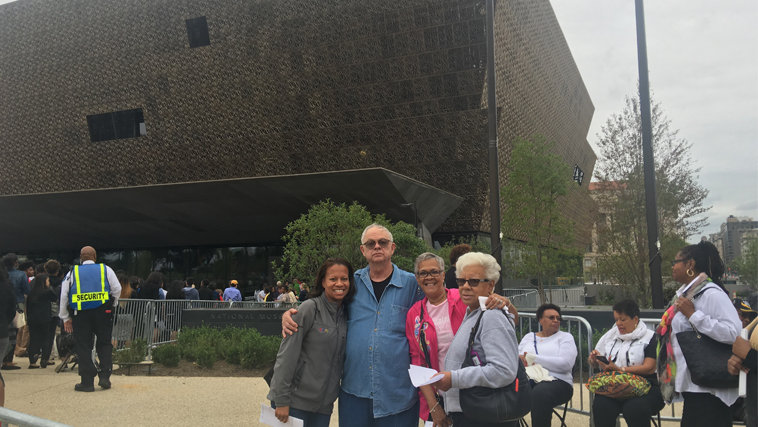Patricia Black is my antithesis. But she’s also my mother. “Are you sure I’m not adopted?” I would ask her, knowing that I couldn’t be – we look too much alike.
Perhaps the best instance of our difference is her aversion to flying. Whereas my mother harbors an extreme fear of flying, I love traveling. And I especially love flying.
The first time I ever put her on a flight was earlier this year to Charlotte, NC. It was an onerous experience – not one to alleviate my mother’s fear of the skies. When we landed and drove to our destination, though, we spoke of an upcoming event that we both held dear to our hearts: the opening of the brand-new Smithsonian Museum of African American History and Culture.
I knew she wanted desperately to go – as did I – and on August 6, 2016, I woke up at 4:45am PST to secure tickets to go on one of the first days that it would be open to the public. When I told her that I had gotten tickets and I was taking her, she cried. Through her tears she wondered how I’d remembered the occasion’s importance to her. Anything for Mom.
She was extremely excited to be going. She was also excited that to get there we wouldn’t be flying – we would be taking the train.
Joining us for the ceremony were two people so close to me that I consider them family. Poppa K, a man I treat as a father, and Trill, the mother of one of my closest girlfriends.
Standing in line to get in, my mother thought the building looked like a hand-woven African basket. I thought it looked like Noah’s ark.
The bottom level is designed to feel like a slave ship. The ceilings are low, the lighting is dark and the passageways are tight. Upon exiting the Middle Passage, you enter the area dedicated to American slavery. On a wall reads an excerpt from the Declaration of Independence:
“All men are created equal…with certain unalienable rights…wherever any form of government becomes destructive of these ends it is the right of the people to alter or abolish it.”
Now, Poppa K is a walking encyclopedia. “He’s better than a tour guide,” says Trill. What he didn’t know, though, is that the plane hanging from the ceiling – one flown by the Tuskegee airmen – was bought on eBay. I made clear to my mother the irony of the situation. My mother is terrified of the skies. The Tuskegee airmen, on the other hand, wanted nothing more than to fly.
She explained how her fear of flying was something her mother instilled in her: “We pass on lots of things to our children, like our fears and hopes, not just our money or property.”
Standing in the midst of this museum, with a quote from James Baldwin inscribed on the wall near us, I couldn't agree with her more.
“The great force of history comes from the fact that we carry it within us, are unconsciously controlled by it…history is literally present in all that we do.”
My family loved the museum. It was their lives displayed in a time capsule. They lived everything that was memorialized. They spoke of where they were and what they were doing when MLK was shot. They traded memories of their experience listening to MLK’s “I Have a Dream” speech.
It dawned on me that the museum mirrored my own experience. It mirrors the experiences of many, in fact, and that’s exactly the point. In the museum I felt connected to my family; I felt connected to the collections and exhibits and artifacts; I felt connected to the generations of people that came before, so many of whom suffered; I even felt connected to the plane that is featured prominently thanks to the marketplace at which I work. The Smithsonian Museum of African American History & Culture is a testament to the significance of my place – and the places of so many others – in history.
On the train ride home, my Mom and I continued to discuss the museum. “I never thought there would be a museum telling our story and its place in American history,” said my mother, pausing.
She continued: “And now there is The Smithsonian Museum of African American History & Culture. I can't wait to tell everyone at the senior center – because now I have to go back.”






